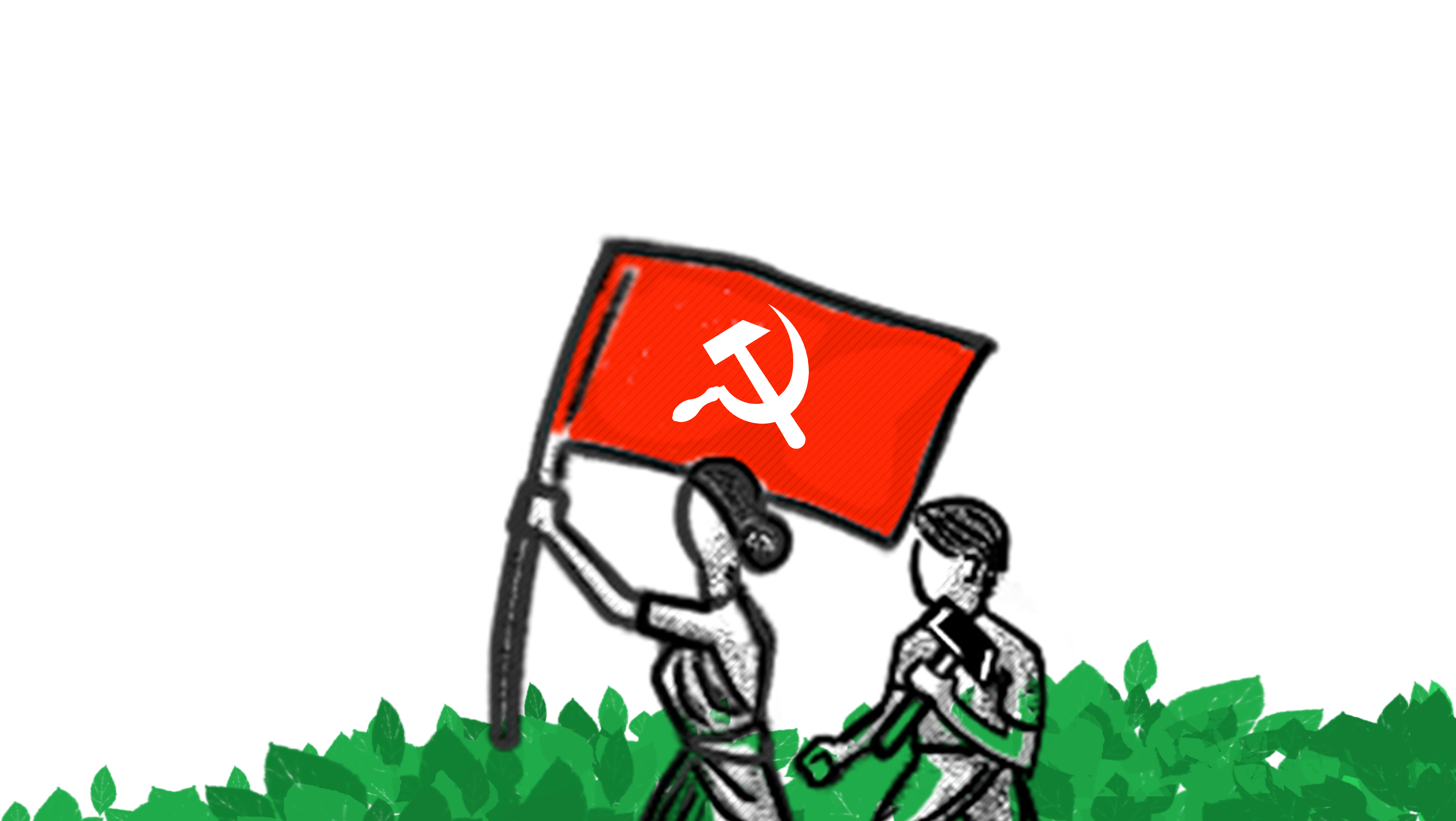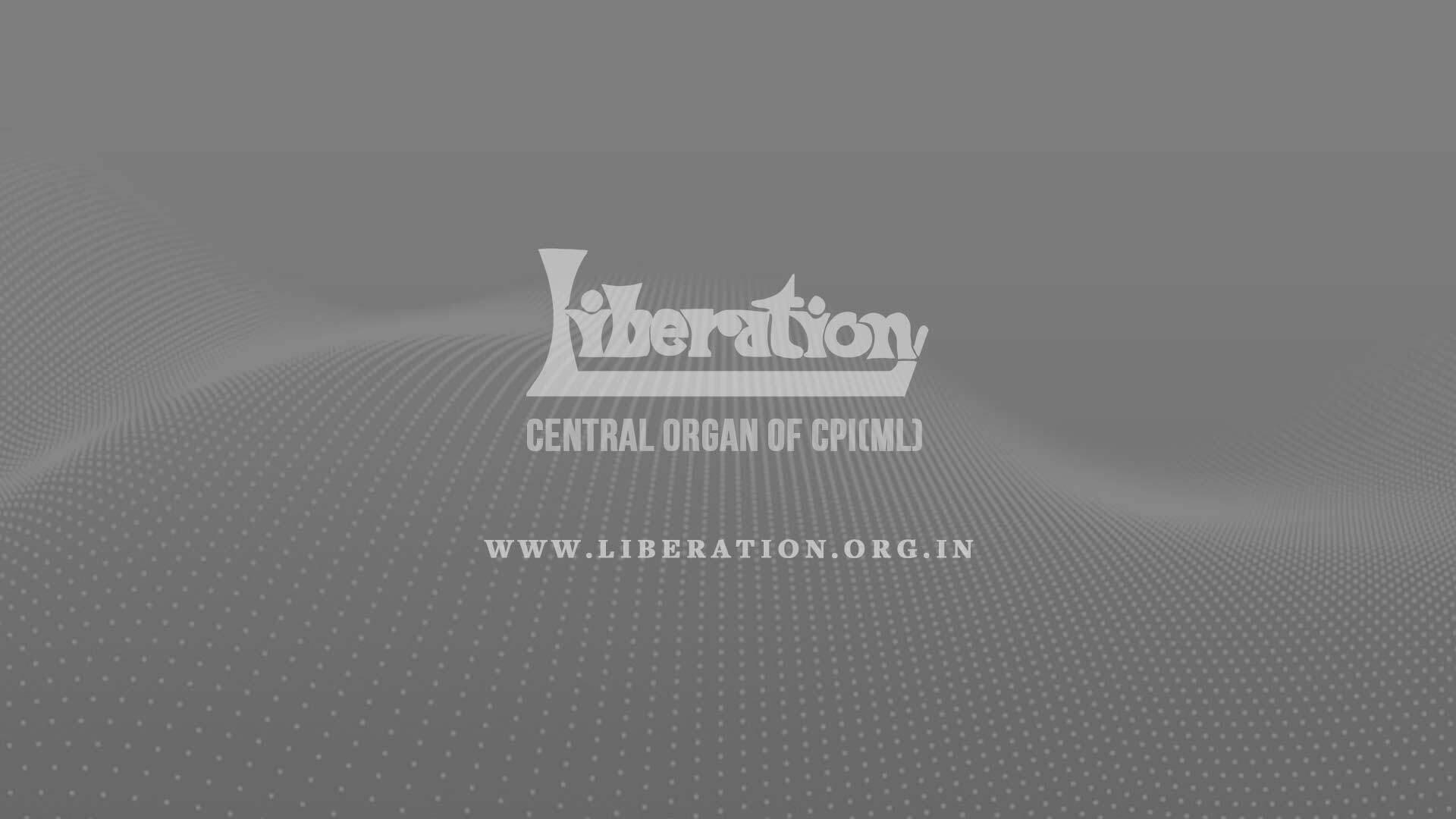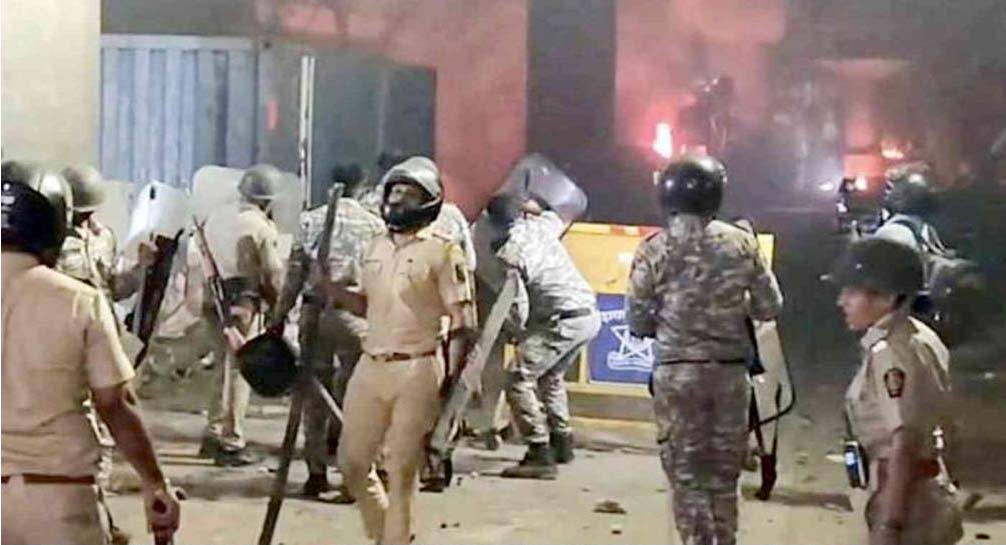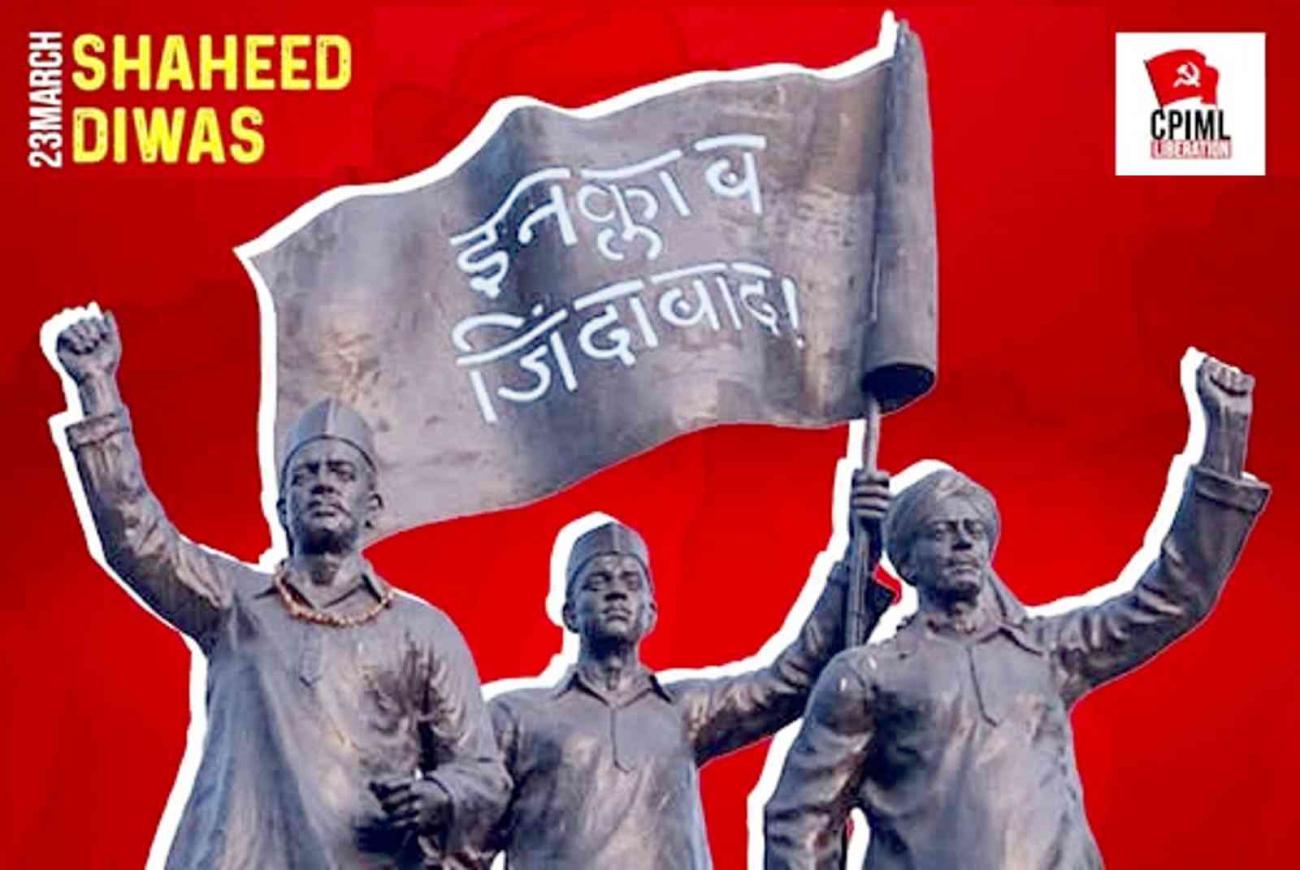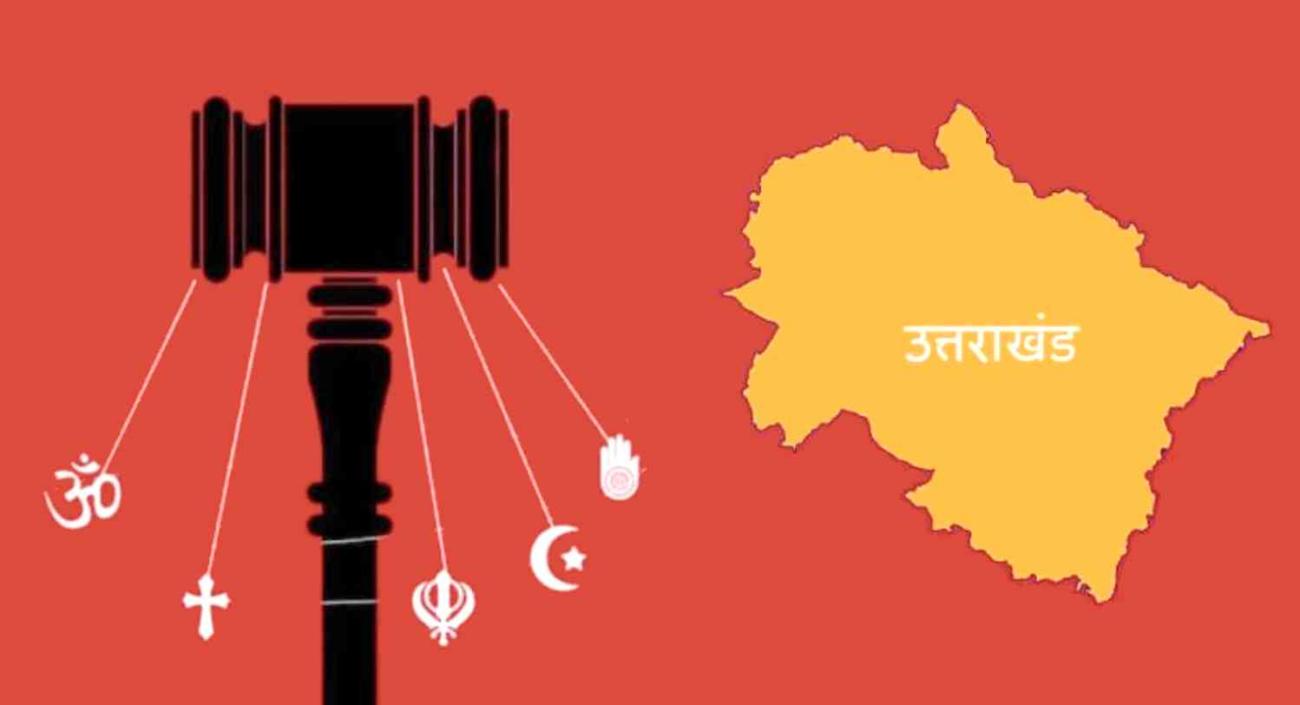Clearly, it has been a callously planned, brutally and chaotically executed lockdown with an extremely poor cost-benefit ratio. But then there are a good many instances - - our very own Kerala being one of them - - where lockdowns, carefully designed in keeping with actual conditions on the ground and executed in combination with vigorous contact tracing and testing on the one hand and on the other, the state supplying the people under lockdown with all necessary provisions and services, have proved quite useful. So the question is not whether lockdown per se, lockdown in the abstract, is good or bad. It all depends on how a nation plans and executes its overall strategy (of which lockdown may or may not be one of several component parts) of combating an epidemic or pandemic in correspondence with its specific socio-economic conditions. But this is about the urgent or immediate task. Closely connected with this is the broader and long-term agenda of developing a national healthcare policy and infrastructure that should have at its core not the logic of capital accumulation but the interests of the aam aadmi, aim at free healthcare for all, and strive to prevent or at least minimize the impacts of epidemics/pandemics. We propose to discuss the two-point agenda in two parts.

Coping With Epidemics And Pandemics
Human society has encountered series of epidemics and, with the exponential growth of international commerce under capitalism, also pandemics. The dreaded Black Death, for example, peaked in Europe between 1347 and 1351 and killed anywhere between 75 to 200 million people. Even Cholera, a disease so familiar to older people in India, spread across much of the globe seven times over the past two centuries, the one that raged between 1960s and early 1970s being the last one. Nearly a hundred years ago we had the so-called Spanish flu, followed by others like HIV (which, since 1981, has claimed the lives of more than 32 million people and at the end of 2018 around 37.9 million people were living with it), SARS (which, like Covid-19, was due to a Coronavirus known as SARS-CoV and infected an estimated 8,000 people in 29 countries in the year 2002), H1N1 or the Swine Flu (which infected an estimated 60.8 million people in 2009 - 2010, with 12,469 fatalities, of which about 80% were people younger than 65 years). A quick glance at a couple of these outbreaks, we believe, can help us in our collective fight against the scourge at hand. For although everything has changed over the decades, it is equally true that the more things change, the more they stay the same.
How the Colonial Rulers Dealt With the 1896 Plague In India
The bubonic plague of 1896 travelled from its epicenter in Yunnan, China, via Hong Kong to Bombay port. The vehicle of contagion was imported merchandise, which were often crammed with infected rodents. From Bombay the disease spread to some other areas including Punjab, the United Provinces, Bengal and even Burma. To make matters worse, the plague was accompanied by a famine that started from Bundelkhand and spread to other areas. By 1901 four lac Indians fell pray to it and by 1905 the toll was 10 lac.
According to some scholars, initially the British government preferred to remain passive because they did not want to disturb the flourishing international trade, particularly the opium trade with China. But when some of their trade partners got wind of the plague and threatened restricting trade with India, the government was forced to act.
In January 1897, Sir John Woodburn moved a very brief and hurriedly drafted bill to arm the authorities with arbitrary powers to check the spread of the disease. The basic motive was to protect British mercantile interests. As Mr. Woodburn said while introducing the bill, foreign countries are already much alarmed at the possibility of infection from India... (and therefore) for the safeguarding of our commerce the government must be prepared to take steps to allay the fears of other nations.
The bill was enacted as The Epidemic Diseases Act, 1897 and put into practice with brute force. Aggressive screening of passengers at railway stations and ports and forced isolation of those suspected of having been infected; house to house searches for sick persons by police and in some cases military personnel, who often ordered men and women to strip in public so that they could be checked for symptoms of plague on armpits and groins; chemically disinfecting not only houses but even human beings suspected of having the disease; fumigating and even burning down houses as well as clothes and other belongings of the people in what we call hot spots� - repressive acts like these generated a lot of animosity among the masses, particularly in Bombay city and Puna (as they were called in those days). The people's disaffection found voice in mass protests, including an attack on a hospital that was virtually a prison for plague patients, and also in articles written by Bal Gangadhar Tilak in his Marathi paper Kesari.
Shortly afterwards, the Chapekar brothers from Puna shot dead the Bombay municipal commissioner WC Rand, who was leading a repressive campaign in the name of plague control, and his military escort. The government took this opportunity to frame several of its opponents on charges of sedition, i.e., instigating or assisting the murder. Foremost among them was Tilak, who was charged for sedition at the Bombay High Court. Justice Arthur Strachey in his charge to the Jury came up with a biased and distorted interpretation of sedition. He said that one was free to criticize the government, but if a journalist made his readers hate the government, that would amount to sedition. He further added that an article published at a time of profound peace, prosperity and contentment could be ignored, but not one which was written at a time of agitation and unrest, when ignorant people would become indisposed to obey and support the government; in the latter case it would certainly amount to sedition. The Jury (most of them Europeans) found Tilak guilty and he was sentenced to eighteen months in prison. About a month later, the Chapekar brothers were caught and summarily sentenced to death.
In sum, the colonial government, guided by its own interests, delayed taking action and then sought to tackle the situation with inhuman repressive measures, as if it was a law and order problem. Instead of trying to de-rat imported merchandise, houses and streets, it tried to chemically disinfect or even burn down whatever they assumed to be contaminated. The municipal authorities never took the 'natives' into confidence and imposed arbitrary restrictions on their movements without prior announcement, even as white and brown 'sahibs' were free to move around. In mortal fear of both the disease and the 'treatment', general people in their thousands fled from cities to their villages, unwittingly helping spread the disease. Whatever the authorities did, however, was done with legal sanction provided by the Act of 1897.
Today it is the same Act that the government of the day has taken up as its main instrument of repression and has also got it amended through an ordinance so as to render the old Act even more barbaric. Following in the footsteps of their colonial forefathers, the fascist rulers are now using the present period of health-cum-humanitarian crisis to frame their foremost critics and political opponents on false charges. And in most cases even the apex court, like the Bombay High Court in 1897, is taking a biased and authoritarian stance in favour of the government, failing to protect the constitutionally guaranteed democratic rights of activists and intellectuals.
But there was another dimension - a popular-democratic heritage - of the struggle against plague. A good many social/religious organisations and individuals, such as Vivekananda and his followers, participated vigorously in plague and famine relief work at great risk to their own lives. And today also we see ordinary people coming forward to help their fellow citizens in all possible ways, even as left activists brave lockdown conditions to combine relief work with agitations to force the authorities do the needful for people in distress.

1918: The Pandemic that Taught Governments to be More Responsible
The so-called Spanish flu spread across the world in three waves (early 1918, late August and early 1919) and claimed at least 50 million lives. Among all countries, the highest toll was in India with 14 to 18 million deaths. As in 1896, Bombay was the gateway of India for the deadly virus, the main vehicle on this occasion being ships carrying troops from war fronts in Europe. From Bombay the men went back to their home States, carrying the disease with them. This time too, a failed monsoon and famine-like conditions in parts of the country left people hungry, weak and more susceptible to disease.
Like typhus and cholera, flu was considered one of the crowd diseases, i.e., diseases which spread like wildfire whenever and wherever large numbers of people share small spaces, as in slums or during social or religious congregations, or in trenches during war. The very term (crowd diseases) had an elitist overtone and theories of social Darwinism and eugenics were quite influential at the time. The prevalent common sense among the upper strata of society was that the poor people were poor and sick because they did not care about personal hygiene and lacked the merit and the enterprise to achieve a higher standard of living. In other words, they themselves were responsible for their plight and the maladies they routinely suffered from. Hardly was the state held responsible for improving the pathetic living conditions of the working people and for prevention of epidemics.
The 1918 flu demolished such notions at least in the context of epidemics and pandemics. While casualties were usually higher among the poor, the rich and the highborn showed no signs of a superior immunity and were infected in great numbers. It was now as plain as day light that blaming the poor and treating them in isolation was not only unjust but absolutely irrational and ineffective. Epidemics needed to be tackled at the population level, irrespective of class and social status, and this could be done only by the state. It was not the first time that such ideas had emerged, but thanks to its vast global spread the 1918 pandemic had a more effective impact on policy makers, pushing them towards state-sponsored healthcare.
An additional stimulus came from the healthcare policy of revolutionary Russia. Immediately after the revolution (November 1917) the Soviet government announced comprehensive social insurance for workers and for the urban and rural poor, covering illness, injury, maternity, widowhood, old age and unemployment. The entire cost of insurance was to be borne by the employer, in most cases the state. No empty promise this, the first socialist state seriously got down to work (more on this later) and managed to build up a rudimentary public healthcare system that proved effective in treatment and prevention of epidemics and other health issues. The socialist model attracted international appreciation and helped mould public opinion in favour of comprehensive state intervention in the health sector.
So under the twin impacts of the 1918 pandemic and the rise of socialist medicine, governments in many countries started building comprehensive public healthcare systems. The trend gained more traction in the context of the New Deal in the USA and the welfare state policy in Europe, while the establishment of the World Health Organisation in 1946 provided a further boost to the process.
All along, however, there was considerable opposition to public healthcare from vested interests like pharmaceutical companies, private hospitals and so on. In course of time deficiencies in state-run healthcare infrastructures also came to light, making them less popular than before. Finally, with the rise of neoliberalism from the late 1970s, public healthcare concerns receded more and more into the background and private medical institutions and medical insurance companies flourished as one of the most profitable business options. The drift continued over the decades, until Covid-19 happened and shoved the state once again to the forefront. We shall come to this in the next issue.
Coping with Epidemics and Pandemics
OVER the period between May 19 and June 22, Covid case count in our country has risen from 1 lakh to about 4.25 lakhs (nearly 14 thousand deaths) while the global count is nearly 9 million (nearly 4,62,000 deaths). In both cases, the numbers are rising precariously.
However, human resistance against the virus continues, and different countries, even different regions or states within the same country have their own stories to tell. Let us briefly review some of these.
How the Original Epicentre Fights the Outbreak
The first phase of China�s fight with novel Coronavirus was tainted with the scandalous and tragic episode related to a bright young doctor who selflessly served his people and was punished for that.
It was the fag end of December 2019. Dr. Li Wenliang, an ophthalmologist in the Central Hospital of Wuhan, learned from Dr. Ai Fen, director of the emergency department of the same hospital, that seven patients from a local seafood market were diagnosed with a respiratory illness resembling severe acute respiratory syndrome (SARS). He studied the matter very closely and shared the information and his views over WeChat with former classmates, asking them not to make it public. But a screenshot of this communication got leaked and went viral. Dr. Li was summoned to a police station and was pressured to sign an admission of guilt. He and the other doctors -- all frontline warriors against Covid-19 -- were reprimanded by local police officials for �rumor mongering and �disrupting social order�.
In mid-January Wenliang was diagnosed with Coronavirus infection in course of treating his patients and hospitalised. On January 28, China's Supreme People's Court issued a statement which condemned Wuhan authorities' investigations into people like Li who shared early information about the virus. It might have been a fortunate thing for containing the new Coronavirus, if the public had listened to this 'rumor' at the time, and adopted measures such as wearing masks, strict disinfection and avoiding going to the wildlife market, the commentary said.
While undergoing treatment, Li continued to post to his Weibo account and speak out against misinformation. I was wondering why official notices were still saying there was no human-to-human transmission, and there were no healthcare workers infected, he wrote on January 31. He breathed his last after seven days.
A tremendous outpouring of grief and public anger followed, with trending hashtags on Weibo such as Wuhan government owes Dr. Li Wenliang an apology and We want freedom of speech. A group of top Chinese academics signed an open letter calling for the central government to issue an apology to Dr. Li and to protect freedom of speech. Li Wenliang was hailed in China and abroad as a heroic whistleblower, and Ai as the one who provided the whistle.
Under tremendous pressure, the Chinese Communist Party�s Central Commission for Discipline Inspection investigated the matter. Its report recognised that Dr. Li and other doctors were mistreated and placed all blame on local police officials, refusing to accept that numerous such instances of suppression of democratic rights actually flow from the government�s policy itself and that was what needed to be drastically changed. Those officials were then subjected to some sort of disciplinary action. The Wuhan police department revoked the admonishment and tendered a solemn� apology to Li and his family members. In April, Li along with thirteen other eminent fighters against the Coronavirus was commended as martyr.
Thus ended (or did it?) the true story of Li Wenliang, a bright young doctor and a member of the Communist Party (as the Central Commission mentioned in its report) who deserved to be felicitated for his vanguard role not posthumously but when he was alive.
Meanwhile, the fight against the pandemic was picking up steam.
Owing to shortage of protective gear and lack of information about the virus, nearly 3000 healthcare workers were infected in the first few weeks of the outbreak, but the gaps were soon overcome. Identification and sequencing of the unknown virus were done pretty quickly and the genetic information passed on to the WHO. This enabled scientists around the world to immediately start developing test kits, treatment options and vaccines.
On the ground initially there was a good deal of chaos and confusion. The health infrastructure was really overwhelmed with a ceaseless -- and growing -- influx of patients. A few cases of people suffering unattended were reported. Like we have seen Haryana and UP sealing their borders with Delhi, China also witnessed scenes like Henan authorities digging up trenches to block roads connecting Hubei so as to keep contagion at bay. But the central government intervened quickly and asked the provincial governments to follow the principle of block one, not three, that is, block the virus from spreading, but don�t block roads, traffic (especially of emergency supplies and essential goods) and internet access.
Things improved after an apex group of top officials from all ministries and led by Premier Li Keqiang was formed. It started guiding and reviewing in detail various aspects of the work on a day-to-day basis, thus ensuring good coordination and prompt implementation of policies. Thousands of military medical personnel as well as soldiers were mobilised to assist civil authorities.
 A good many stadiums and other places were converted into makeshift hospitals. In Wuhan two new hospitals -- one at Huoshenshan and the other at Leishenhan -- with 1,000 and 1300 beds respectively, were erected in about 10 days, using prefabricated units. They became functional from early February. Both are fitted with latest state-of-the-art equipment and systems such as specialized ventilation systems and depressurized rooms to prevent airborne microorganisms from spreading out of the hospital.
A good many stadiums and other places were converted into makeshift hospitals. In Wuhan two new hospitals -- one at Huoshenshan and the other at Leishenhan -- with 1,000 and 1300 beds respectively, were erected in about 10 days, using prefabricated units. They became functional from early February. Both are fitted with latest state-of-the-art equipment and systems such as specialized ventilation systems and depressurized rooms to prevent airborne microorganisms from spreading out of the hospital.
Hubei province and its capital Wuhan was put under lockdown from 22-23 January. The rest of the country remained partially open, but under different degrees of restrictions depending on the spread of infection. In areas under lockdown, proper arrangements were made for supplying all essential commodities to the doorsteps of residents. E-commerce giants like Taobao, Alibaba were allowed to work with stipulated precautions, so supply chains of medicines, food items etc. were not as completely shattered as in our country. And of course, there was hardly any report of man-made crisis of migrant labourers.
Like many other events, the Chinese New Year celebrations due to start from 25 January were canceled, but by that time a large number of people travelled out of Wuhan and other parts of Hubei. However, by using its expertise in AI (Artificial Intelligence) the authorities were able to trace most of these people and began monitoring their health in quarantine centres or hospitals.
Apart from AI, China extensively used other digital technologies such as big data, cloud computing, blockchain, and 5G internet. The government saw to it that private as well as state-owned companies make their algorithms publicly available, researchers share data and firms step up access to video-casting tools for educators and those working from home. For example, Alibaba Cloud made its AI computing power available to public research institutions around the world to accelerate the development of new pneumonia drugs and vaccines. The 5G+ remote consultation system was widely used to connect hospitals across the country to the best experts in Beizing , thereby further improving the efficiency of diagnosis and treatment.
After two-and-a-half months of lockdown, Wuhan and Hubei reopened, with abundant caution, on April 8. The country started limping back to a new normal with rigorous safety protocols. The government made it clear that there was no room for complacency. To guard against a possible resurgence of cases, Wuhan tested its entire 11 million population in May. Since then, some positive cases are being reported here and there, including Beizing, and authorities are taking prompt action. The key idea now is restraint, not lockdown.
In his recent book Pandemic! COVID-19 Shakes the World, Slavoj Žižek observes that China dealt assertively and successfully with the outbreak in Wuhan. But, he says referring to the Dr. Li Wenliang episode, without an open space for citizens' critical reactions to circulate, mutual trust between the people and the state is impossible to sustain. That is China's great challenge.
And that in a way sums up the Covid-19 experience of China.
A Vigorous Trace, Test, Treat� Regime
Between January 19 and February 18, South Korea had recorded a total of 30 cases and no deaths. Within the next 10 days, there were more than 2,300 cases because the 31st patient turned out to be a super-spreader who, before her diagnosis, travelled to many crowded spots in Seoul and other cities. Hundreds of people at a church she had attended and in the surrounding areas tested positive.
A task force was created, comprising all government ministries and, crucially, all regional and city governments, too. Thisjoined-up strategy�yielded quick results. When one region ran out of hospital beds for example, nearby cities or provinces were asked to open up beds in their hospitals.
The moment the virus DNA pattern was confirmed in Wuhan, Korean medical teams and bio-companies were able to develop new testing kits with surprising speed. Learning from its experience of handling the outbreak of MERS (Middle East Respiratory Syndrome, which is also caused by a Coronavirus) in 2015, a vigorous regime of trace, test, treat� was put in place. Anybody in Korea who has symptoms or reasons to be tested can get the test within minutes at a �drive-thru� or �walk-thru� testing centres and receive the result by text message the very next day. In all complicated cases, hospitals test the patients several times before releasing them. This strategy has yielded remarkable results in controlling the spread of the virus and mortality rate, without declaring a nationwide lockdown.
When parliamentary election was announced for April 10, many voiced concerns for infection. But elaborate safety measures including repeated disinfection of the polling booths were made and people turned out with great enthusiasm and in record numbers (66.2 per cent, the highest in 28 years) and re-elected president Moon Jae-in�s Democratic Party (DP). The latter got a clear majority on its own and a more reassuring majority with its ally Platform Party. This was in stark contrast against the last election in 2016, when turnout was low and no party got a clear majority. Naturally, the brisk voting and the comfortable victory are being attributed to Moon�s successful handling of the crisis.
A Developing Country with Few Cases and No Death
Vietnam confirmed its first Covid-19 case on January 23, declared a national emergency within seven days and swung into action. It banned entry of Chinese tourists and imposed a 14-day institutional quarantine for all foreign arrivals. To arrest the spread of the virus it relied on a few relatively low-cost solutions: swift development of its own set of testing kits which were more affordable and got CE and WHO certification; quick strategic testing (e.g., of anyone showing even feeble symptoms and her contacts) aggressive contact tracing, vigorous public communication campaigns and targeted lockdowns of hotspots rather than a undifferentiated countrywide lockdown. And it worked fine. Though it has a long border with China, Vietnam has so far reported 349 cases with zero deaths and 326 recoveries. However, some of the measures (e.g., everyone entering a hospital or government building or a big city must, apart from undergoing thermal screening, fill in a health self-declaration form stating recent contact details as well as medical and travel history; anyone refusing to do so or furnishing false information being liable to be criminally charged) have been criticized for violation of civil liberties including right to privacy.
Kerala Revisited
In our previous issue, we carried two pieces on the encouraging experience of Kerala -- one by Dr. E P Mohanan and the other by comrade Venu. Here we bring you an interesting district level story (one that Dr. Mohanan referred to, but with some more details) and an essential update.
Thus goes the story, excerpted from What the world can learn from Kerala about how to fight covid-19 by Sonia Faleiroarchive, published in MIT Technology Review, April 13, 2020.
On March 7 it was learned that about a week ago, a family of three -- father, mother and adult son -- had arrived from Italy. They skipped a voluntary screening for covid-19 at the airport and took a cab to reach their home in the town of Ranni, Pathanamthitta district, 200 kilometers away. When they started developing symptoms soon afterward, they didn�t alert the hospital. [Later,] all three tested positive for the virus, and infected two of their elderly relatives. They were now in isolation at the district hospital but didn�t want to declare the full extent of their movements.
Under the leadership of PB Nooh, District Collector of Pathanamthitta, a large team consisting of some 50 police officers, several paramedics, and volunteers, was organised. They quickly retraced the family�s movements using GPS data mined from the family�s mobile phones and surveillance footage taken from the airport, streets, and stores.
They found that over the seven days since arriving in Kerala, the family had gone from one densely crowded place to another -- a bank, a post office, a bakery, a jewelry store, a number of hotels and even even a police station.
By March 9, Nooh�s teams had a map and a flow chart listing each place they had been, when, and for how long. The information was circulated on social media, and people were asked to dial a hotline if it was possible that they had interacted with the family. Nooh�s office was flooded with calls: the family had met with almost 300 people since arriving in town.
Now the teams had to track down all these people, gauge their symptoms, and either send them to the district hospital for testing or order them to self-isolate at home. The number of people self-isolating quickly rose to more than 1,200. Still, Nooh knew that people who agreed to self-isolate wouldn�t necessarily do it. So he set up a call center in his office, bringing in more than 60 medical students and staff from the district�s health department, whose job was to call everyone isolating, every day.
The callers ran patients through a questionnaire meant to assess their physical and mental health, but also to catch lies. If anyone was caught sneaking out, we had the police, the revenue department, and village councils ready to act,� Nooh says. But the carrot was as important as the stick: his office also delivered groceries to those in need. The district was placed on high alert. ��
This was how the district brought the disease under control. Indeed, good macro-level policies are not enough, much depends on efficient micro-management.
Now for the update see box.
Kerala in the Second Phase of the Battle
AS of June 19, Kerala have had a total of 2,912 Covid-19 patients. While 1532 persons recovered and left hospitals, 21 patients lost their lives till date. The remaining patients are undergoing treatment in various government hospitals, while 130,655 and 1,914 persons are under home quarantine and institutional quarantine respectively.
The period from January 30 to May 3 marked the first stage of Covid-19 in Kerala, when Keralites from abroad and other states had not yet started returning to the state in large numbers. In this stage, there were just 499 patients. Only 3 persons of advanced age and with factors of co-morbidity died.
The second phase began from May 4 with the arrival of migrant Keralites. Up to June 17, as many as 84,195 persons from foreign countries and another 179,059 from other parts of India returned to Kerala. This led to spikes in both positive cases and mortality. Still, the rate of secondary transmission was brought down to 1 for 10 cases while it was 1 for 3 in the first phase. Overall, the rate of contact spread for these two phases taken together is approximately 1 for 7 (14.28%) , which is much lesser than the rate noticed elsewhere in India and many countries abroad. The data recently released by the central government also specifically mentions Kerala�s achievement in having minimized the rate of contact spread from 33% in the beginning to about 10.45% at present. This was made possible by more eff

